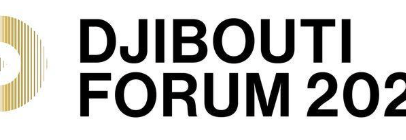Industrial IoT set to shake up African oil & gas sector
by Pedro Guerreiro, Managing Director: West Africa at SAP Africa
JOHANNESBURG, South Africa, 22 March 2017 -/African Media Agency (AMA)/- The global oil and gas industry is undergoing a period of unprecedented change and disruption. Falling crude oil prices have put immense strain on the entire oil value chain, while the increasing availability and affordability of renewable energy sources means oil & gas is no longer the de facto choice for energy generation.
An African perspective on oil & gas
In Africa, where the oil and gas industry drives the economic engine of several of its largest economies, the need for innovation in the oil and gas value chain is critical to its continued growth and success. By the end of 2013, Africa was estimated to have 228 billion barrels of oil-equivalent, with oil making up 56% of this and gas accounting for the remaining 44%, according to EY.
The US was until recently the largest buyer of African crude oil, but exports dropped from a high of 1.8m barrels a day in 2005 to only 274,000 in 2015. There is hope that the new administration’s policy changes could herald an era of renewed oil exports to the North American market.
According to PwC, one of the key areas oil and gas companies should focus on if they are to weather the storm is in exploiting new technology to innovate, minimise costs and extract further value from existing infrastructure. And of all the emerging technologies, IoT presents the greatest benefit to the oil and gas sector.
The Internet of Oil & Gas
The oil and gas industry has long been at the forefront of automation and technological disruption. However, IoT is poised to completely revolutionise the industry, from extraction to operations to customer engagement. Connected devices open opportunities for oil and gas companies to improve safety, increase efficiency and ensure visibility across the value chain.
A Morgan Stanley report estimates that there’s a global market of $100bn for autonomous vehicles in the trucking and logistics industry. With only a 50% penetration of IoT, the global manufacturing industry can see a potential cost saving of $500bn. In fact, IDC estimates that IoT revenue in Africa and the Middle East will reach $114bn by 2020.
Oil and gas companies have taken note of the potential of IoT and are investing vast sums into IoT to achieve improved uptime, ensure predictive maintenance, reduce the cost of compliance, and transform business practices. Asset uptime and maintenance has emerged as the key initial driver of interest in IoT: an ARC strategy report found that 60% of respondents named reduced asset downtime as the catalyst for their interest in IoT.
Fleet management stands to benefit greatly from IoT: construction contractor Essar Projects uses GPS and RFID systems to monitor equipment movement, fuel levels and consumption, achieving a 5% saving on maintenance and a 10% saving on fuel costs. The ability to use sensors to track equipment performance and proactively manage maintenance is helping oil and gas companies to ensure optimum equipment uptime.
Making IoT work for oil and gas companies
As sensors and connected devices continue to permeate every aspect of the oil and gas value chain, companies will start generating unprecedented volumes of data. SAP solutions powered by the SAP HANA platform enables companies to extract valuable insights from this data. Oil and gas companies can get real-time information from multiple locations, including information on location awareness, project status, environmental factors and safety. Environment, health and safety management professionals can mine employee data – including social media – to identify key risks to operations, while public information that forms part of the big data lake can be used to determine public sentiment on oil and gas operations.
Caution must be taken in terms of data security, as recent malware examples have shown control systems can be attractive targets for intruders wishing to harm or interrupt production. It is equally important that the correct technology partner is chosen: IoT brings together data from hardware, sensors, devices, apps, telematics and connectivity to the cloud. The software vendors that connect and process all this data need to have the depth of experience to reshape business processes to allow oil and gas companies to fully enjoy the benefits of IoT.
However, the real value of IoT for the oil and gas industry lies in connecting operational infrastructure to broader business software. In-memory computing combines IoT data with business transactional data in a single shared database, in real time. This allows oil and gas companies to gain real-time insight into key operations and asset performance indicators, equipping business leaders with better decision-making capability and opening the door to streamlined business processes and entirely new business models.
For oil and gas companies ready to transform their operations through IoT, the benefits are unquestionable. Choosing the correct technology partner that has the depth of industry experience and the robust cloud-based in-memory platform needed to bring the benefits of IoT to life is essential to their success
Distributed by African Media Agency (AMA) on behalf of SAP Africa
For more information, visit the SAP News Center. Follow SAP on Twitter at @sapnews.
About SAP
As market leader in enterprise application software, SAP (NYSE: SAP) helps companies of all sizes and industries run better. From back office to boardroom, warehouse to storefront, desktop to mobile device – SAP empowers people and organizations to work together more efficiently and use business insight more effectively to stay ahead of the competition. SAP applications and services enable more than 345,000 business and public sector customers to operate profitably, adapt continuously, and grow sustainably. For more information, visit www.sap.com.
# # #
Any statements contained in this document that are not historical facts are forward-looking statements as defined in the U.S. Private Securities Litigation Reform Act of 1995. Words such as “anticipate,” “believe,” “estimate,” “expect,” “forecast,” “intend,” “may,” “plan,” “project,” “predict,” “should” and “will” and similar expressions as they relate to SAP are intended to identify such forward-looking statements. SAP undertakes no obligation to publicly update or revise any forward-looking statements. All forward-looking statements are subject to various risks and uncertainties that could cause actual results to differ materially from expectations. The factors that could affect SAP’s future financial results are discussed more fully in SAP’s filings with the U.S. Securities and Exchange Commission (“SEC”), including SAP’s most recent Annual Report on Form 20-F filed with the SEC. Readers are cautioned not to place undue reliance on these forward-looking statements, which speak only as of their dates.
© 2017 SAP SE. All rights reserved.
SAP and other SAP products and services mentioned herein as well as their respective logos are trademarks or registered trademarks of SAP SE in Germany and other countries. Please see http://www.sap.com/corporate-en/legal/copyright/index.epx#trademark for additional trademark information and notices.
Note to editors:
To preview and download broadcast-standard stock footage and press photos digitally, please visit www.sap.com/photos. On this platform, you can find high resolution material for your media channels. To view video stories on diverse topics, visit www.sap-tv.com. From this site, you can embed videos into your own Web pages, share video via email links, and subscribe to RSS feeds from SAP TV.
For customers interested in learning more about SAP products:
Global Customer Center: +49 180 534-34-24
United States Only: 1 (800) 872-1SAP (1-800-872-1727)
For more information, press only:
Ansophie Strydom, SAP Africa, +27 (11) 235 6000, a.strydom@sap.com
Adam Hunter, Clarity Communications, +27 (711) 787 035, adam@claritycomms.co.za
The post Industrial IoT set to shake up African oil & gas sector appeared first on African Media Agency.
Source: AMA










